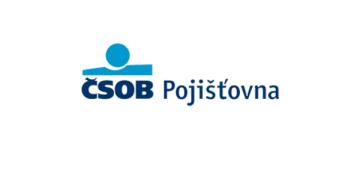Mattoni 1873 a.s. - case study
The Mattoni Group is the largest producer of mineral and spring waters in Central Europe . In addition to traditional mineral water, Mattoni produces Aquila spring water and Magnesia, Poděbradka, Dobrá voda and Hanácká Kyselka mineral waters. The company's portfolio also includes distribution brands of Granini fruit juices, Yo syrups and Schweppes lemonades.
The company was founded by Heinrich Mattoni, a native of Karlovy Vary, in 1873. It acquired its present form in the 1990s thanks to significant investments by the new owners, the Italian Pasquale family. Currently, Mattoni exports its products to 20 countries worldwide and owns foreign mineral water brands in Austria and Hungary. In Bulgaria, Mattoni is one of the leading producers and exclusive distributors of PepsiCo soft drinks.
Requirements
At the time of the project implementation, the customer group comprised approximately thirty companies based in several European countries, often with a common ownership. The companies had used different ERP and accounting systems and different currencies.
The aim of the project was to implement a financial consolidation solution that would enable:
- Maximum automatic retrieval of source data from subsidiaries,
- Automatic validation of the correctness of the retrieved data,
- Subsequent addition of corrections, movements, comments and other required information from the entities in a uniform format,
- Elimination of inter-company transactions,
- Elimination of ownership interests,
- Export of consolidation outputs in the form of individual company input packages and group-wide output containing basic financial statements and forms completed on a monthly or quarterly basis,
- Processing of financial data in defined currencies,
- Use of alternative organisational structures,
- A significant reduction in the time required for Consolidated financial statements,
- Reliance on this data as a source of 'one truth' for the parties involved in the consolidation, i.e. including the possibility of tracing the origin of the consolidation result back to the source data,
- Flexibility of the solution in view of the Group's future growth or possible changes in its organisational structure.
Solution
We recommended and subsequently implemented a solution based on the IBM Cognos Controller technology. It is a cutting-edge technology for system support of financial consolidation and controlling.
In cooperation with the customer's IT department, we created a development/testing environment and a production environment.
In the first phase, we developed and agreed with the customer on a document containing an analysis of the current state (as-is) and a design of the future state (to-be).
In the as-is section, we broke down and described the existing processes and excel files used to process the consolidation. In the second part, we described the to-be solution. This part included, but was not limited to:
- Newly defined Central Chart of Accounts (CCoA),
- Naming convention for creating a balance sheet, income statement, cash flow account codes,
- Description of the input file structures, detailed specifications of individual item types,
- Frequency and specifications of import processes,
- Code lists (countries, currencies, exchange rates, companies, etc.),
- Definitions of eliminations and accounts entering them
- Specification of user groups and description of access rights to each part of the consolidation process and data type,
- Design of forms for entering additional information at the subsidiary and group level,
- And others.
Benefits
In the new solution, employees of subsidiaries can access the application via the web interface and via Excel using a plug-in. This is used in particular for completing the extensive and detailed forms required by auditors under the IFRS standard. Among other things, the web interface offers user-friendly and intuitive import mechanisms for uploading data by entities, including maintaining mapping tables, and subsequent automatic checking of the uploaded data. For the regular conversion of financial information into consolidated structures, conversion methodologies have been defined for each of the subsidiaries.
Consolidation staff have an overview of the status of uploading data from each subsidiary and the progress of filling in individual forms in the web interface.
In order to make it easier for the entities to fill in the required inputs in the forms, we implemented, in cooperation with our colleagues from Mattoni, a number of check calculations that alert the users to missing or incorrectly entered inputs in the form of a traffic light at the appropriate point during the filling in process.
Employees who manage the consolidation process can use the fat-client capabilities for their ad-hoc analyses, where they can view the data in the greatest detail and track the gradual changes in values and their causes at each stage of elimination and consolidation.
With a simple process, large reports for individual companies or a consolidated group can be bulk exported to Excel in minutes if required.
Technology: IBM Cognos Controller – on premise




